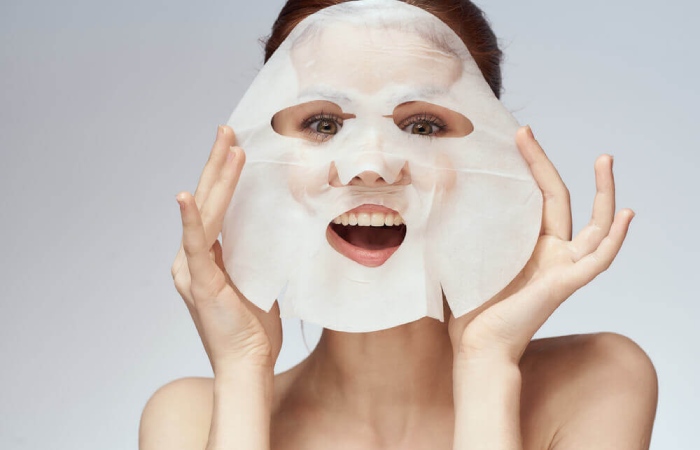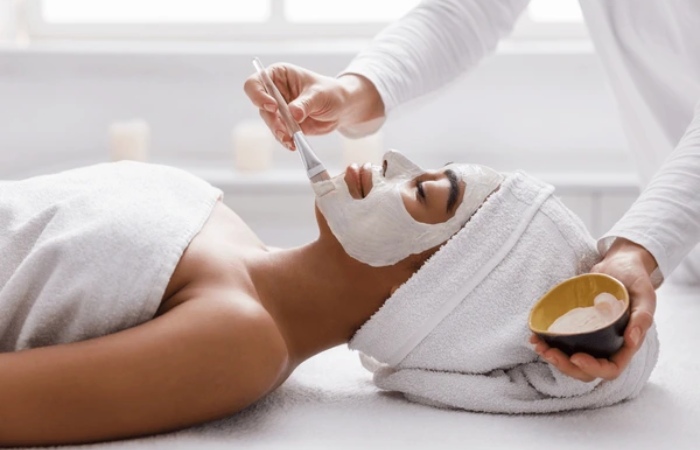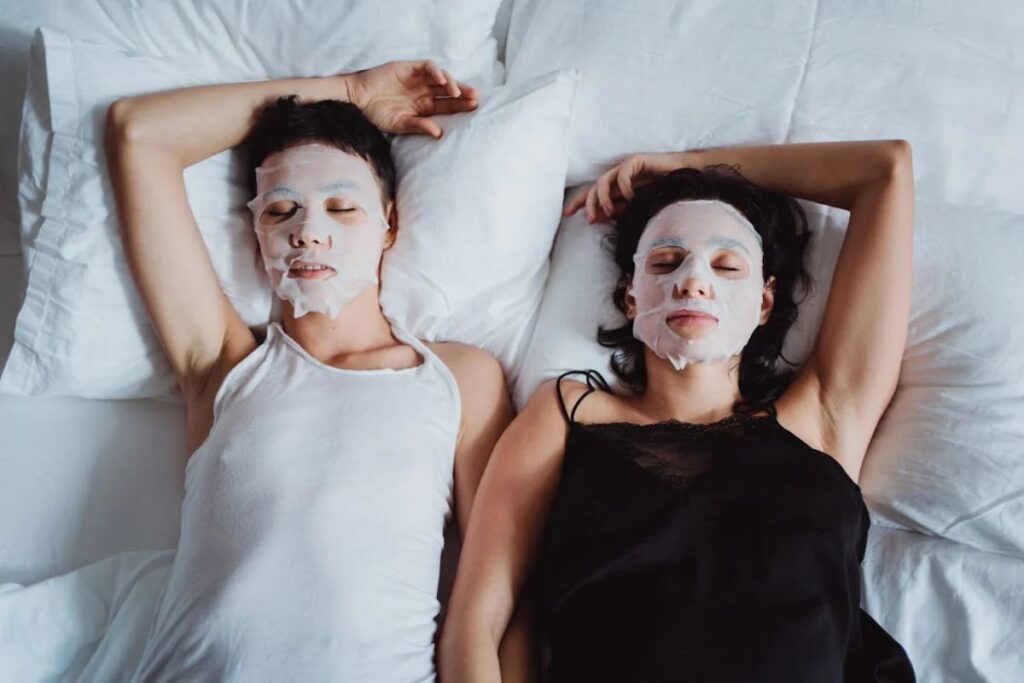Sheet masks are a fixture of the beauty zeitgeist. Skincare content creators heavily promote them, apply them mid-flight to combat dry cabin air, and slather before significant events to impart a glowing, selfie-ready complexion. But do sheet masks do anything, or is all this hype for nothing? To get honest answers, we turned to board-certified dermatologists and asked them to tell us straight.
What are sheet masks?

Sheet masks are thin, cloth-like facial treatments soaked in serum. They’re typically made from a thin cotton or paper material, though you can find them in cellulose, hydrogel, and collagen varieties.
Sheet masks often contain hydrating and nourishing ingredients. Still, some contain ingredients like niacinamide to brighten, activated charcoal to cleanse, and more, explains Blair Murphy-Rose, MD, FAAD, a board-certified dermatologist at Newport Beach Dermatology and Plastic Surgery.
Sheet masks, designed for single use, are typically applied to clean skin, following the contours of the face, and left on for 15 to 30 minutes to give the skin time to “absorb” the ingredients. Some people like to add other treatments to enhance the effect, such as a facial roller, gua sha tool, or cooling ice balls. After that, you remove them and complete the rest of your skincare routine.
Do sheet masks work?
Yes, Dr. Murphy-Rose says sheet masks are effective if the product is high quality and used as directed. “Sheet masks can provide hydration, improve skin texture, brighten the complexion, soothe and soften, and even treat inflammatory conditions like acne, among other things.”
Ava Shamban, MD, FAAD, a board-certified dermatologist in Beverly Hills, agrees. “They offer a longer period for ingredients to sit on and penetrate the skin than applying serum with your fingers from a bottle or pump,” says Dr Shamban. “They also eliminate potential contamination from unclean fingers or hands.”
Brendan Camp, MD, FAAD, a board-certified dermatologist at MDCS Dermatology in New York City, agrees they’re effective. He tells us that masks are a nice addition to basic skin care but shouldn’t be considered a replacement for moisturizers or other essential products.
How to Choose the Best Sheet Masks

Everyone has jumped on the mask bandwagon, from mass retailers to drugstores, influencers, and more. However, it’s essential to look closely at the ingredients to ensure you’re nourishing your skin and using high-quality masks that put a lot of care and intention into the product.
“Skin issues can arise with sheet masks unless purchased from a doctor’s office or a reputable skincare brand, which at best won’t cause any harm, but won’t do any good either,” says Dr Shamban.
For example, she says some sheet masks contain a mix of ingredients that can cause irritation or inflammation, and some use very low-quality ingredients and/or minimal amounts of active ingredients, artificial fragrances, chemicals, dyes, and other fillers.
“As for the material, look for cellulose, which is hypoallergenic and skin-friendly. “It usually conforms better to the skin’s contours, creating a tight seal for better delivery of the serum with minimal dripping,” says Dr Shamban. “Tensel, derived from wood pulp, is also good for sensitive skin.
Cotton is a good natural fibre, but it may not adhere well to the skin or become discoloured, which can irritate.” She adds that collagen masks provide a glowing or hydrated look after use but temper your expectations as they don’t boost collagen production or deliver it to the skin.
Tips to Get the Most Out of Your Sheet Mask
In addition to buying a good product, here are some ways to get the most out of a sheet mask.
Follow the directions: Trail the instructions on the package, and don’t leave it on for longer than recommended sheet masks.
Store it in the refrigerator: “Storing a sheet mask before use can soothe and calm irritated skin,” says Dr. Camp. “A cold sheet mask can also help reduce puffiness or swelling on the face.”
facial product on top: Dr Blair-Murphy Rose suggests using a facial roller or gua sha tool on top of a sheet mask, which can help stimulate circulation and improve lymphatic flow.
Gentle exfoliant first: Dr Camp says you can use a gentle exfoliant before applying it, which can help absorb the active ingredients in the sheet mask.
Use every drop: “After you remove the sheet mask, you can massage any remaining serum into your skin and apply the following skincare steps.


